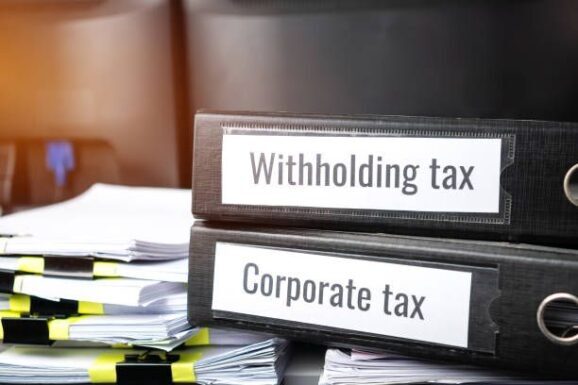
Step-by-Step Guide to Submit the CT600 Corporation Tax Return
One of the most important duties for any limited company in the UK is to file a Corporation Tax Return. Particularly for directors or new business owners who are not familiar with HMRC’s system, the procedure may seem overwhelming. The CT600 is the primary form used for this, and filling it out accurately is crucial to maintaining compliance, avoiding fines, and making sure your business’s tax matters are in order.
From setting up your company accounts to filing your return online, this guide explains each step of the CT600 filing process in an easy-to-follow manner. It will help you understand what’s needed and how to file correctly, regardless of whether you intend to handle it yourself or work with an accountant.
What Is the CT600 Form?
Companies submit their Corporation Tax Return to HM Revenue & Customs (HMRC) using the official CT600 form. It gives HMRC comprehensive details about the financial operations of your business, such as:
• Total income and profits for the accounting period
• Allowable expenses and reliefs claimed
• The final amount of Corporation Tax due (or losses carried forward)
To put it simply, the CT600 informs HMRC of your company’s annual tax liability or whether there is no tax due at all.
Who needs to file a CT600?
You must file a CT600 if your company is:
• A UK limited company registered with Companies House
• A non-UK company with a permanent establishment or branch in the UK
• Any company or organisation subject to Corporation Tax, even if it made no profit
HMRC may still demand a return even if your business is dormant (not trading), unless they have provided written confirmation to the contrary.
Understand Your Accounting Period
Prior to finishing your CT600, you must understand your accounting period, or the duration of the return. The accounting period for corporation tax typically matches the fiscal year of your business. It can, however, occasionally vary, particularly in your first year of trading or when you adjust your year-end.
For example:
• If your company started trading on 1 January 2024 and prepared accounts to 31 December 2024, your Corporation Tax accounting period would likely be the same.
• If you prepared accounts for more than 12 months (say 15 months), you’ll need to file two CT600s, one for the first 12 months and another for the remaining period.
Before beginning the CT600, make sure that the dates of your accounting period match those on your financial statements.
Step 1: Gather All Necessary Information and Documents
The key is to prepare. Gather all the data and supporting materials you’ll need to accurately complete the CT600 before filling it out.
Here’s what to gather:
• Company details: Name, registration number, and Corporation Tax Unique Taxpayer Reference (UTR)
• Accounting records: Full profit and loss account, balance sheet, and trial balance
• Previous CT600: To cross-check opening balances and losses brought forward
• Tax computation: Adjustments made from your accounts to calculate taxable profits
• Capital allowances schedule: Details of fixed assets and depreciation adjustments
• Reliefs and allowances: R&D tax relief, Annual Investment Allowance (AIA), or losses carried forward
• Bank statements and supporting evidence: Proof of income, expenses, and transactions
Having these on hand helps prevent inconsistencies and guarantees a more seamless filing process.
Step 2: Accessing the CT600 Form
There are two ways you can file your corporation tax return:
- Using the online Corporation Tax service offered by HMRC is perfect for simple returns.
- Using authorised accounting software is advised for businesses that need iXBRL tagging (which is necessary for attaching accounts and computations) or have complicated tax matters.
Use the latest version of the form is CT600 (2025) Version 3, which you can find on GOV.UK.
Step 3: Completing the CT600
The CT600 form is divided into multiple sections. A detailed explanation of each component and the data it needs is provided below.
A. Company Information
This section includes your basic details:
• Company name (as registered with Companies House)
• Company registration number (CRN)
• Corporation Tax UTR
• Type of company (trading, non-trading, charity, etc.)
• Contact information and declaration of the person completing the form
Check that these details match those on your Companies House records and HMRC correspondence.
B. Accounting Period
Here you enter:
• Date of the accounting period’s beginning and ending
• Whether this is the first return for your business
• If it’s a short period (less than 12 months) or you’ve changed your year-end
Accurate dates are crucial because they determine your filing and payment deadlines.
C. Income and Turnover
Keep track of your business’s overall trading revenue as well as any additional revenue, like:
• Rental income
• Interest received
• Dividends from UK companies (if taxable)
• Gains from selling assets
All numbers should match those in your tax calculations and business accounts.
D. Deductions and Reliefs
You can use this section to claim allowances, reliefs, and legitimate expenses to lower your taxable profits. These can include:
• Capital allowances on machinery, equipment, or vehicles
• Research and Development (R&D) tax relief
• Trading losses carried forward or back
• Marginal relief (if applicable for companies with profits between thresholds)
Keep supporting documentation for every claim, as HMRC might ask for it in the future.
E. Tax Calculation
After all deductions have been made, figure out how much taxable profit remains.
Next, apply the appropriate corporation tax rate. As of April 2023:
• 19% applies to profits up to £50,000
• 25% applies to profits over £250,000
• Companies between these limits may qualify for marginal relief to reduce their effective rate.
The CT600 has fields that display your total corporation tax charge as well as any taxes you have already paid.
F. Supplementary Pages (if applicable)
Depending on the circumstances of your business, you may need to fill out more pages. Examples include:
• CT600A: Loans to participants (if you’re a close company)
• CT600B: Charity or community amateur sports club details
• CT600C: Group relief claims or surrender
• CT600J: R&D expenditure credit (RDEC) claims
These guarantee that HMRC is fully aware of your tax situation.
G. Attach Accounts and Computations
When filing online, you must attach your:
• Company accounts (Profit & Loss, Balance Sheet, Notes)
• Tax computations showing how you arrived at your figures
The format for these attachments must be iXBRL (Inline eXtensible Business Reporting Language). Double-check before submitting, but the majority of accounting software automatically converts files to iXBRL.
Your return may be rejected by HMRC if the proper files are not attached.
Step 4: Filing Your CT600 Online
Once the form and attachments are ready:
- Log in to your HMRC online account or tax software.
- Upload the CT600 form and supporting documents (accounts + computations).
- Review all details carefully before submission.
- Submit the return and wait for the HMRC acknowledgement
Once HMRC has successfully received the return, you should receive a confirmation email or digital receipt. Save this for your documentation.
Step 5: Paying Your Corporation Tax
Paying corporation tax and filing your CT600 are two different processes.
• Payment due date: 9 months and 1 day after the end of your accounting period
• Return filing deadline: 12 months after the end of your accounting period
For example, if your year ended on 31 December 2024:
• Corporation Tax payment due: 1 October 2025
• CT600 filing deadline: 31 December 2025
You can pay via:
• HMRC online services
• BACS or CHAPS transfer
• Direct Debit (recommended)
• Corporate credit or debit card
Always make your payments as soon as you can because late payments result in interest and possible penalties.
Step 6: After Submission
Once your return is filed:
• HMRC will review it and issue an acknowledgement
• If any errors or missing information are found, they’ll contact you or your agent.
• If you’ve overpaid tax, you can request a refund through the same system.
Always store copies of:
• The submitted CT600
• iXBRL accounts and computations
• HMRC submission receipt
• Proof of payment
Keep these for a minimum of six years so that HMRC can initiate an investigation.
Common Mistakes to Avoid
Even minor mistakes can result in fines or delays. Here are the most frequent mistakes companies make:
• Wrong accounting period dates: Make sure your return matches your company’s financial year exactly.
• Missing supplementary pages: Include forms like CT600A or CT600L if they apply to your situation.
• Incorrect tax rates: Use the correct Corporation Tax rate for your accounting period and profit level.
• Incomplete iXBRL attachments: Ensure your accounts and computations are properly tagged and uploaded.
• Undeclared director loans: Report any loans or advances to directors or shareholders using CT600A.
• Late filing or payment: Submit your return within 12 months and pay within 9 months and 1 day of your year-end.
These problems can be avoided by double-checking your numbers and going over the return before submitting it.
Why This Matters
Correctly filing your CT600 is essential to operating a legally compliant and financially sound business; it goes beyond simply checking a box. Errors or missed deadlines may result in fines, interest, and needless attention from HMRC. However, filing accurately keeps your records organized and your tax bill equitable by enabling you to take advantage of all the deductions and reliefs to which you are entitled.
Beyond compliance, timely and accurate CT600 filing shows the professionalism and dependability of your business, which can be crucial when submitting applications for investments, loans, or tenders.
If you’re unsure about any step from preparing your accounts to completing the return, working with a qualified accountant can save you time and stress. It guarantees accurate filing, providing you with peace of mind and freeing you up to concentrate on expanding your company.
Get In Touch
Find Out More

Director Loan Tax Rate Increase: HMRC’s 3.75% Rate & What It Means for You
Director Loan Tax Rate Increase: HMRC’s 3.75% Rate &...

Umbrella Company
UMBRELLA COMPANY An umbrella company is a company that acts as...

How to Register for Self-Assessment in the UK 2025 | Step-by-Step Process
Self-Assessment Registration: A Step-by-Step Guide Got some extra cash...

Financial Forecasts
Financial Forecasts To take important business decisions it is...

